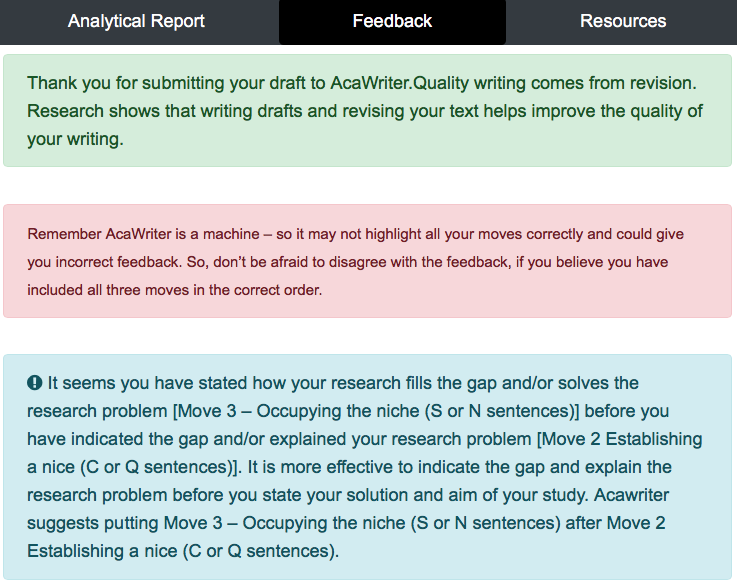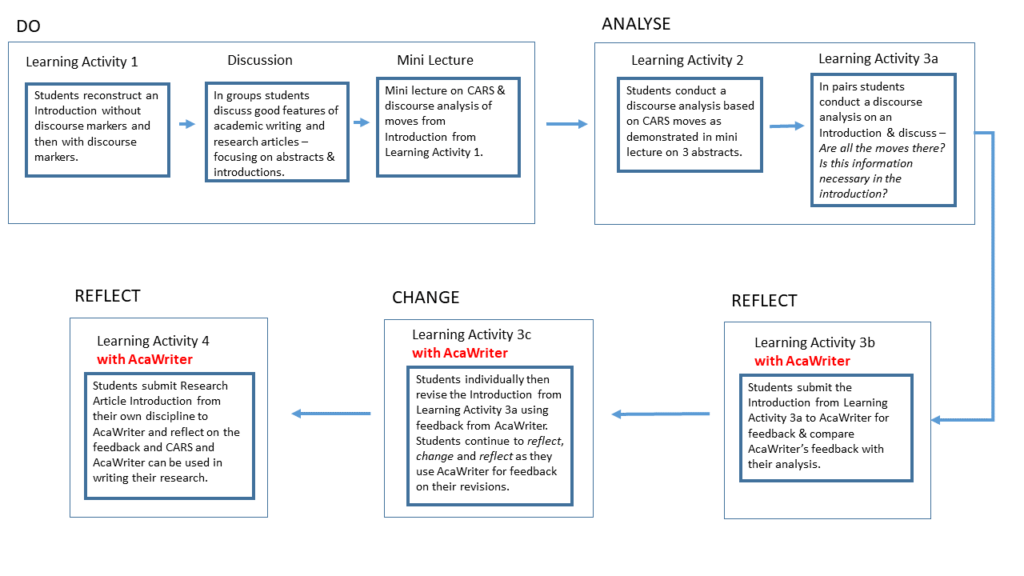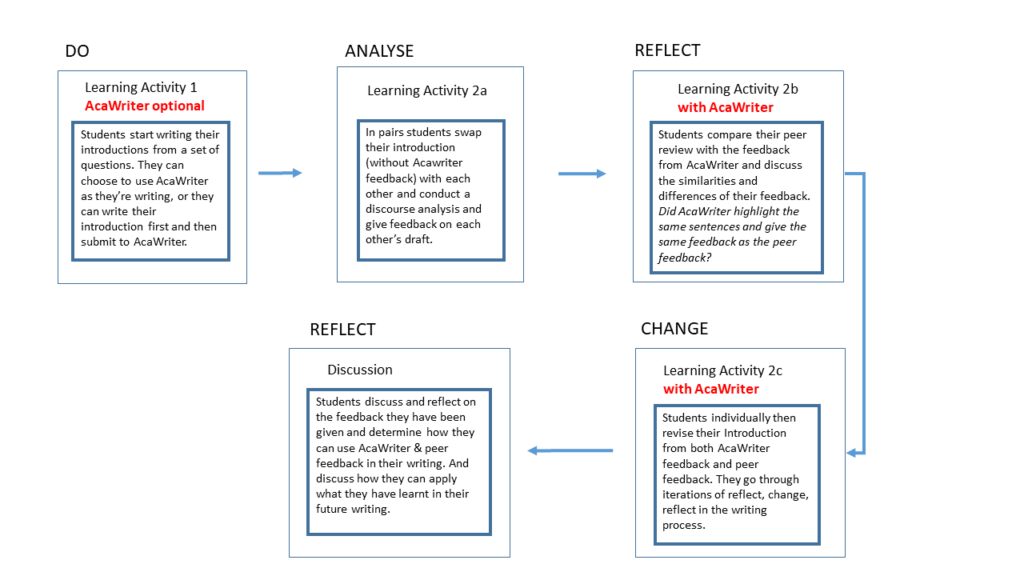Introduction
Introduction
 This Writing Activity with Writing Analytics (WAWA) was developed as part of the doctoral research conducted by Sophie Abel, as part of the Academic Writing Analytics project at the University of Technology Sydney’s Connected Intelligence Centre.
This Writing Activity with Writing Analytics (WAWA) was developed as part of the doctoral research conducted by Sophie Abel, as part of the Academic Writing Analytics project at the University of Technology Sydney’s Connected Intelligence Centre.
High level literacy and written communication skills are essential for Higher Degree Research (HDR) students. Research funding restructures and new university policy drives mean that HDR students are now required to publish during their candidature rather than after. This has increased pressure on HDR students to write about their research effectively and quickly while also conducting research. However, most HDR students find writing difficult.
Issues of clarity, argument, expression and logic have been reported as key problems in HDR student writing. Writing Analytics (WA), is one approach that could be leveraged to help students improve their research writing. WA focuses on supporting student writing practices by providing formative feedback. This feedback allows the user to reflect on what they have written and revise their writing. Therefore, the aim of my research is to integrate WA tools in HDR research writing programs to help develop and improve research writing for HDR students. The outcome of this research is a writing analytics learning design framework in integrating WA in HDR writing programs and it will document an innovative approach to teach research writing in the Australian research training context.
The findings from my research will demonstrate how to better implement WA tools in research writing pedagogy to better support HDR students learn research writing so that they can produce quality writing.
Learning Design
Learning Design
License:![]() Creative Commons BY-SA 4.0
Creative Commons BY-SA 4.0
Developed by: Sophie Abel, Simon Knight, Simon Buckingham Shum (University of Technology Sydney)
The learning design pattern developed for writing introductions and abstracts was Do-Analyse-Reflect-Change-Reflect. This learning design pattern is developed from: Kitto, K., Lupton, M., Davis, K., & Waters, Zak. (2017). Designing for student-facing learning analytics. Australasian Journal of Educational Technology, 33(5), 152-168.
The learning design included face-to-face learning activities using AcaWriter over two workshops as below:
Session 1
Session 2
Analytics Genre Profile
Analytical Writing (Research Abstracts/Intros)
This describes the Genre module in AcaWriter that has been developed to support this activity.
License:![]() Creative Commons BY-SA 4.0
Creative Commons BY-SA 4.0
Developed by: Sophie Abel (University of Technology Sydney)
Version: 1.0
Based on: Analytical Writing (Standard)
Purpose: Highlights sentences that appear to show hallmarks of good academic writing specifically for Research Abstracts and Introductions.
Textual Features: The Analytical (Abstract/Intro) genre highlights the document’s rhetorical moves according to Swales (1990) framework Creating a Research Space (CARS). The three moves that are highlighted are:
Move 1 – Establishing a research territory:
E – Emphasis of a significant or important idea
B – Background information and reviewing previous work
Move 2 – Establishing a niche:
C – Contrasting idea, tension, disagreement or critical insight
Q – Question or gap in previous knowledge
Move 3 – Occupying the niche
N – Novelty and value of your research
S – Summary of the authors goal, nature of the research or structure of the paper
The three moves have been assigned a highlighter colour so that they are easily identified. Moves are tagged on the sentence level and more than one tag may appear in a sentence (see example screenshot).

Feedback:
Feedback is given on a text when moves are missing and when moves are in the incorrect order. See example below:

A Resources tab provides more details about CARS and the three moves.
Research
Research
Project homepage: University of Technology Sydney, Connected Intelligence Centre, Academic Writing Analytics project
This WAWA is in the process of being evaluated. Background sources:
Swales, J. M. & Feak, C.B. (2012). Academic writing for graduate students (3rd ed.). Ann Arbor, Michigan: The University of Michigan Press.
Swales, J. (1990). Genre analysis: English in academic and research settings. Cambridge, UK: Cambridge University Press.
Paltridge, B. & Starfield, S. (2007). Thesis and dissertation writing in a second language: A handbook for supervisors. Abingdon, Oxon: Routledge
Kamler, B. & Thomson, P. (2014). Helping doctoral students write: pedagogies for supervision paperback (2ed.). Abingdon, Oxon: Routledge
Resources
The following resources have been created to help students become familiar with the CARS model and how to apply these moves in their writing.
CARS model
CARS-resourceCARS and move sentence stems
CARS resource sentence stems 2
